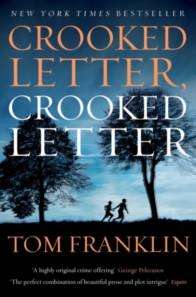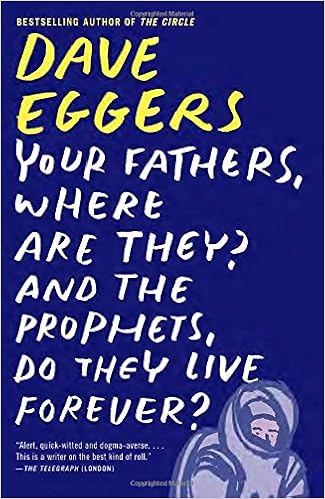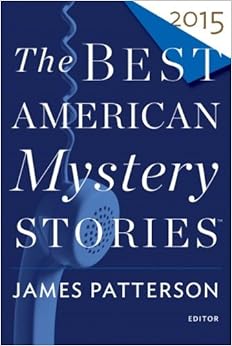Last week, Bouchercon announced this year’s finalists for the Anthony Awards, and I was pleased to get two mentions on that slate: one for my own writing, with On The Road With Del & Louise (Henery Press) earning a nomination for Best First Novel (just on the heels of winning the Agatha in that category the week prior), and another on behalf of the contributors to Murder Under the Oaks: Bouchercon Anthology 2015 (Down & Out Books), which earned attention in the Best Anthology or Collection category. I’m honored, needless to say, with the attention! And congratulations as well to fellow SleuthSayer B.K. Stevens, whose Agatha-nominated novel Fighting Chance earned another honor as a finalist for this year's Anthony for Best Young Adult Novel—great news all around!
Soon after the Anthony news came out, I reached out about hosting here a quick chat with the other finalists for Best Anthology or Collection:
- Christopher Irvin, for his single-author collection Safe Inside the Violence (280 Steps)
- Thomas Pluck, editor of Protectors 2: Heroes-Stories to Benefit PROTECT (Goombah Gumbo)
- Todd Robinson, editor of Thuglit Presents: Cruel Yule: Holiday Tales of Crime for People on the Naughty List (CreateSpace)
- Kenneth Wishnia, editor of Jewish Noir: Contemporary Tales of Crime and Other Dark Deeds (PM Press).
I have a couple of these anthologies already on the shelf, and I’ll be picking up the others soon, and just wanted to offer a chance for all of us to share some information about our respective collections and the writers who contributed.
Two questions each below, and everyone’s stepping to the podium (so to speak) in alphabetical order. Join me in welcoming them to SleuthSayers today!
First, while the titles of our respective collections already might give some sense of what readers will find on the pages within, how would you describe your own editorial principles/guidelines in selecting stories for and shaping your particular anthology—or in Chris’s case, for sorting through and considering your own stories?
Christopher Irvin: Witnessing the collection come together, story by story, was one of the most rewarding aspects of publishing the book. I'd kept an assortment of lists in notebooks over the past few years of potential line-ups for a collection, but it wasn't until late 2014 (when I was seriously thinking of pitching a collection) that I began to recognize themes of family, melancholia, regret, etc., that were present in nearly all of my work. It was a revelation that has since made me step back and reflect more on my work and the decisions (conscious, or more likely unconscious) that I make in my writing. Long story, short, the selection fell in along the above mentioned themes, trending a tad more 'literary' toward the end, especially with the four new stories in the collection. It's been fun to see how my work and interests have evolved over the past few years. It's one of the reasons I really enjoy reading other author's collections as well.
Thomas Pluck: When you're putting together an anthology to fight child abuse, it inspires all sorts of anger in the contributors. It's a subject that we don't want to think about, and when we do, it quite rightfully ticks us off. The strong abusing the weak. So the natural instinct is for writers to tackle the subject head-on, and write about it. The first Protectors anthology has many more stories about children in danger, and while it was a great success, it made for a tough read. For the second book, I specifically asked for other kinds of stories. The book is called Heroes for two reasons: it's a loose theme, and the Protect H.E.R.O. Corps is who the book benefits. That stands for Human Exploitation Rescue Operative; the HERO Corps is a joint effort between USSOCOM and Immigration and Customs Enforcement, to train and hire wounded veterans as computer forensic technicians, to assist law enforcement in locating and rescuing the child victims of predators. It's a very tough job, one that combat veterans are suited for, because they have experience with the toll such a job takes. With such a heavy subject, I wanted lighter stories. And while we do have a few tales where children are rescued, the stories run the gamut from traditional crime and mystery, whimsical fantasy, historical mystery, revenge tales, horror, and tales of everyday heroism. The order was the tough part. It's a huge book of 55 stories. What I did was label each story with a colored sticky note, yellow for sunny or happy, red for rough or bloody, and blue for in between, and I arranged them like a palette. I played around until I could start strong with an uplifting tale or two, then dip to a few hard hitting ones, give readers a break, then hit them again, make them elated, then ease to a strong ending. Like a story.
Todd Robinson: I've always had the idea to do a Christmas-themed anthology. There are a couple out there, but none that feature the kind of lunatic writers that oil my gears, the writers who we published in Thuglit magazine.
I didn't do open submissions on it. I reached out to writers that I'd worked with at least two or three times each—writers who I knew would bring their own distinct styles to whatever they sent my way, and they truly outdid themselves. Considering the narrow theme of Christmas, I'm still amazed at how different each story is from the next. My guys and gals KILLED it.
 Kenneth Wishnia: First of all, we adopted a generous “You don’t have to be Jewish to write Jewish noir” policy, which turned out to be prophetic (and how Jewish is that?), because the collection includes stories by a diverse group of authors, including Asian-Canadian author Melissa Yi, Los Angeles’s own Gary Phillips, luminaries as Marge Piercy and Harlan Ellison, and self-professed survivors of Bible Belt redneck culture, Jedidiah Ayres and Travis Richardson—both of whom have been honored for their contributions: Jed’s story “Twisted Shikse” was selected for a forthcoming “best crime story of the year” anthology and Travis’s story “Quack and Dwight” has been nominated for the Derringer and the Anthony Awards. Mazl tov!
Kenneth Wishnia: First of all, we adopted a generous “You don’t have to be Jewish to write Jewish noir” policy, which turned out to be prophetic (and how Jewish is that?), because the collection includes stories by a diverse group of authors, including Asian-Canadian author Melissa Yi, Los Angeles’s own Gary Phillips, luminaries as Marge Piercy and Harlan Ellison, and self-professed survivors of Bible Belt redneck culture, Jedidiah Ayres and Travis Richardson—both of whom have been honored for their contributions: Jed’s story “Twisted Shikse” was selected for a forthcoming “best crime story of the year” anthology and Travis’s story “Quack and Dwight” has been nominated for the Derringer and the Anthony Awards. Mazl tov!I also stressed that submissions did not have to be textbook “Noir with a capital N,” and so we ended up with stories depicting the Holocaust, cynical Jewish humor, the passing of generations, the Golden Ghetto phenomenon, child sexual abuse in the insular Orthodox communities of Brooklyn, anti-Semitism in the mid- and late-20th century United States, and the broader contradictions of ethnic identity and assimilation into American society.
Sounds pretty noir to me—even without the obligatory doomed detective and femme fatale slinking around dark alleys.
Second: There’s a whole range of different ways to tell a story, of course—but are there certain elements that consistently stand out to you as the hallmarks of a great story?
Christopher Irvin: Make me care, right? That's the bottom line that every editor wants. I need to empathize with characters—good, bad, ugly—no matter how long or short the work, I need to want to come along for the ride. My time spent editing for Shotgun Honey had a major impact on my writing to this end. Much of my writing, especially in Safe Inside the Violence, involves indirect violence or characters on the periphery of violence. Perhaps the run up to a seemingly normal encounter in their everyday lives.
There is a 700 word limit at Shotgun Honey. Authors need to bring it from the first sentence if they want to succeed. Often this results in an immediate violent encounter to up the stakes and keep the story moving. While this can be (and has been) done very well, reading these stories, learning from these stories, pushed me to go in a different direction.
Thomas Pluck: My own writing, I write what interests me, what terrifies me, what angers me. I go for extremes, life-changing experiences, the things I would never want to discuss in public. It forces me to put my heart into it, and that resonates. While editing anthologies, I have to tone down my relentless inner critic, and just try to enjoy them. If I do, they go in the "good" pile and I think what could make them better, if anything. I have some legendary authors in here like David Morrell, Joyce Carol Oates, Harlan Ellison, Andrew Vachss. I didn't edit those stories, obviously. If there were typos in the manuscript, we corrected them together. There are a few authors who have their first publication here, who needed a little editorial help for clarity. That's my mantra: clarity, economy, then art.
What makes a great story? For me, I lose myself in them. The characters, the world, the story itself, they can't be ignored. Harlan Ellison's "Croatoan" is one. It begins with a scene so real, then descends into a nightmarish dream world, like the character is spelunking in his own subconscious. "Placebo" by Vachss is another, so spare, like a folktale. Not a word wasted. Some writers have that gift, a voice that draws you into their world. You either have it or you don't, the best we can do is trust the voice we have and let it do the work.
Todd Robinson: For me, it always starts with a great character voice and their arc within. If I don't care about the characters, why in sweet fuck-all would I care about their story?
Art Taylor: In the fiction workshops I teach at George Mason, I often quote John Updike on what he looks for in a short story: “I want stories to startle and engage me within the first few sentences, and in their middle to widen or deepen or sharpen my knowledge of human activity, and to end by giving me a sensation of completed statement.” That may sound kind of broad, but it strikes me as solid criteria—and solid advice for writers too in crafting their own stories. A couple of words I come back to time and again are compression and balance. In terms of compression, I look for stories that start as close to central action as possible (the conflict hinted at right there in the first paragraph or first line) and then rely on sharp and suggestive details rather than lengthy explanations—glimpses of larger lives and bigger stories beyond the edges of the page. Balance can refer to many things: between character and plot, for example (each informed by the other), or between beginnings and endings—especially in terms of endings that seem both surprising and inevitable in some way, as if every line, every word, has been building inexorably toward where the story ends up. When a writer can manage compression and balance—and then entertain all along the way… well, that story is a keeper, for sure.
Kenneth Wishnia: I was looking for the same elements that I look for in a great novel: vivid, compelling writing (Reed Farrel Coleman’s “Feeding the Crocodile,” which is up for an ITW Thriller Award for Best Short Story), a suspenseful set-up that engages the reader right away (Charles Ardai’s “Who Shall Live and Who Shall Die”) or a non-traditional story that makes me laugh at life’s absurdities (Rabbi Adam Fisher’s “Her Daughter’s Bat Mitzvah”). Some authors hit the trifecta (David Liss’s “Jewish Easter”), but I would have accepted any combination of two out of three, or even just one if the author really nailed it.
A quick final word from Art: Do check out all these anthologies yourself—and look forward to seeing everyone in New Orleans later this year!
































